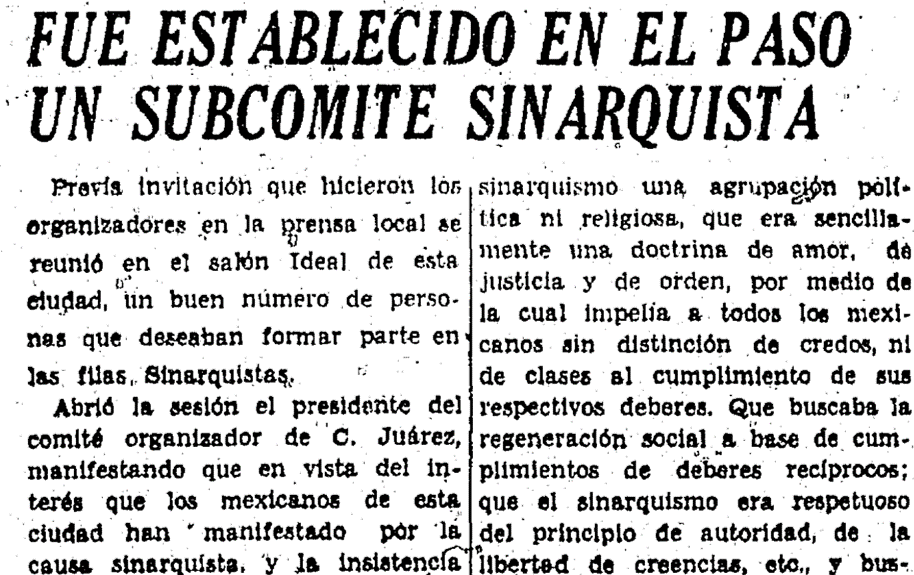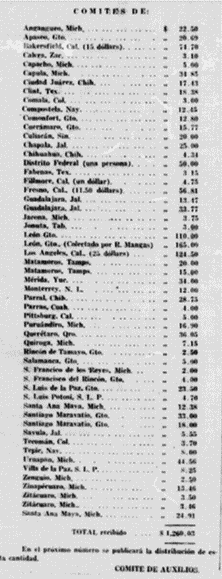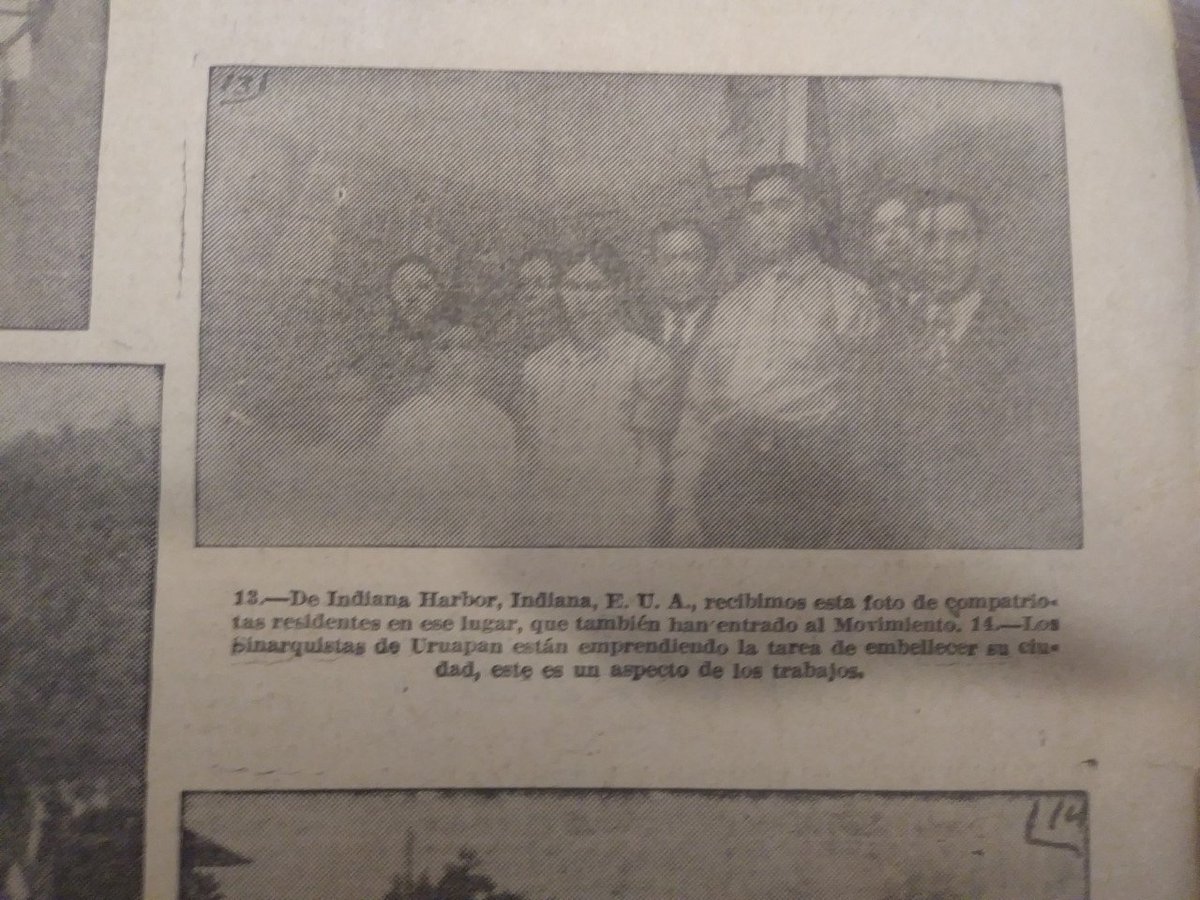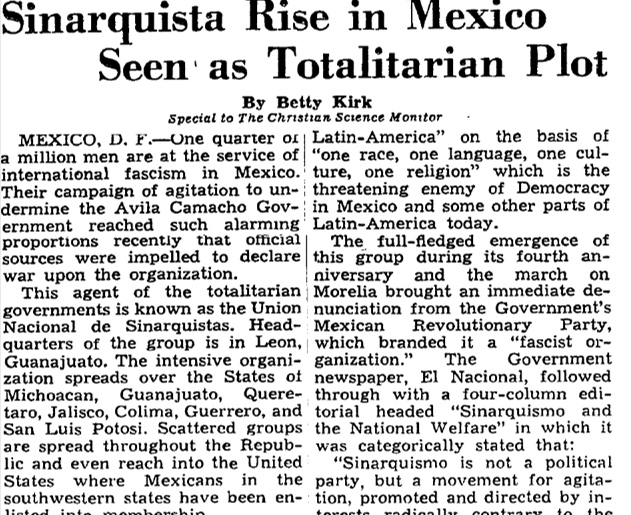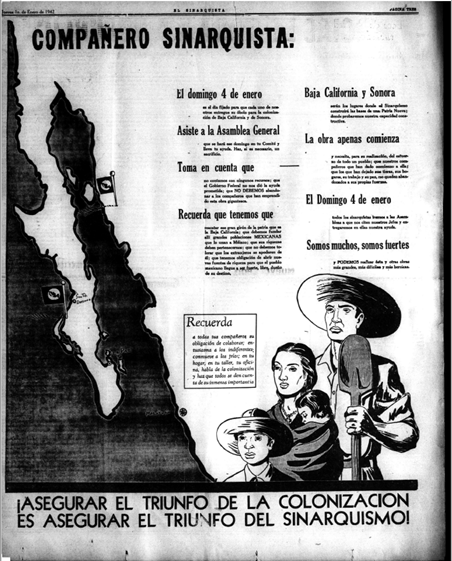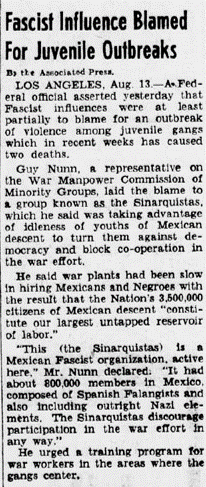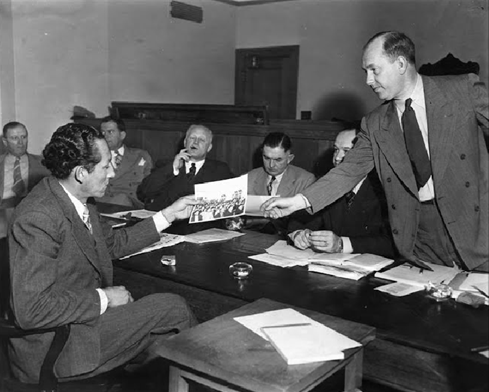Hi all! I& #39;m Nathan Ellstrand, @nellstra, a PhD Candidate at @loyolahistdept. Thanks to @WHAGrads for the opportunity to takeover! My work focuses on the Unión Nacional Sinarquista (UNS or National Synarchist Union) in the U.S. from the late 1930s into the 1960s.
1/
1/
The Unión Nacional Sinarquista (UNS or National Synarchist Union) was a Catholic, anti-communist and ultra-nationalist organization that emerged in Mexico in 1937 out of decades of church-state violence following the Mexican Revolution.
2/
2/
The movement& #39;s leaders took on the name "sinarquista" or "synarchist" in English from "synarchy" in ancient Greek which means "with rule." This name juxtaposed the group with the postrevolutionary Mexican state which it associated with "anarchy" or "without order."
3/
3/
So why this particular organization? And how does this Mexican movement fit into the context of the Western U.S.?
4/
4/
I am interested in transnational political history between the U.S. and Latin America. Given the current political moment, I wanted to learn more about fascism. I took a class on the history of fascism and through it, wrote a historiography of Mexican fascist movements.
5/
5/
The movement that stood out the most to me was the UNS because of its past rooted in political Catholicism. Of particular interest was how the group had committees throughout California, Texas and even in Chicagoland.
6/
6/
When I looked at the literature, I saw that scholars have almost exclusively examined the movement within the context of Mexico. Additionally, academics of Mexican American history have mainly looked at the community& #39;s involvement in the political left, but not on the right.
7/
7/
Upon further investigation of primary sources on the UNS, organizations and institutions outside the group increasingly viewed it as fascist from the early 1940s onwards.
8/
8/
Thus, I am investigating how the UNS created a transnational right-wing community among Mexicans in the United States, that was eventually brought down through the combined efforts of the political left, media outlets, and both the U.S. and Mexican governments.
9/
9/
Mexicans that eventually joined the UNS in the 1930s and later came to the U.S. as a result of political upheaval from the Mexican Revolution of 1910-1920 and the Cristero Wars of the 1920s and 1930s. For more on this, check out Julia Young& #39;s work.
10/ https://oxford.universitypressscholarship.com/view/10.1093/acprof:oso/9780190205003.001.0001/acprof-9780190205003">https://oxford.universitypressscholarship.com/view/10.1...
10/ https://oxford.universitypressscholarship.com/view/10.1093/acprof:oso/9780190205003.001.0001/acprof-9780190205003">https://oxford.universitypressscholarship.com/view/10.1...
Soon after the UNS officially formed in 1937 in León, Guanajuato in Central Mexico, committees opened up in Los Angeles, California and El Paso, Texas.
11/
11/
The El Paso, Texas committee emerged as an offshoot of the Ciudad Juárez committee.
"Fue Establecido en El Paso un Subcomité Sinarquista," El Continental, November 27, 1937.
12/
"Fue Establecido en El Paso un Subcomité Sinarquista," El Continental, November 27, 1937.
12/
Sinarquistas in the U.S. communicated with broader membership in Mexico via letters from other committees, as well as regular bulletins and occasional visits from the UNS national committee, now based in Mexico City.
13/
13/
By 1940, the UNS grew beyond Los Angeles and El Paso, stretching into California& #39;s Central Valley and all the way along the Texas-Mexico borderlands into the Rio Grande Valley.
"Donativos," El Sinarquista, August 22, 1940.
14/
"Donativos," El Sinarquista, August 22, 1940.
14/
Between 1940 and 1941, the UNS reached its height in the U.S. growing beyond California and Texas into Chicagoland and having its paper, El Sinarquista, distributed throughout the country.
"Información Gráfica de Toda la República," El Sinarquista, December 18, 1941.
15/
"Información Gráfica de Toda la República," El Sinarquista, December 18, 1941.
15/
With the height of the UNS in the U.S. so too did rising sentiment against it, especially with the deepening of WWII.
16/
16/
Journalists like Betty Kirk wrote considerably about how the organization was a fascist fifth column influenced by Nazi Germany and the Falange Española.
Betty Kirk, "Sinarquista Rise in Mexico Seen as Totalitarian Plot," Christian Science Monitor, June 7, 1941.
17/
Betty Kirk, "Sinarquista Rise in Mexico Seen as Totalitarian Plot," Christian Science Monitor, June 7, 1941.
17/
From late 1941 to 1944, the sinarquistas took on an ambitious project to colonize the north of Mexico in the borderlands to live out their ideal society. Sinarquistas in the U.S. were crucial to funding the project.
"Compañero Sinarquista," El Sinarquista, January 1, 1942
18/
"Compañero Sinarquista," El Sinarquista, January 1, 1942
18/
While UNS colonization took place in northern Mexico, sinarquistas on the ground in the U.S. faced growing scrutiny as Axis sympathizers as the nation went to war in December 1941.
19/
19/
With the Sleepy Lagoon Incident in August 1942, reports surfaced that the sinarquistas were involved with youth gang activity among Mexican Americans.
“Fascist Influence Blamed for Juvenile Outbreaks,” Washington Evening Star, August 13, 1942.
20/
“Fascist Influence Blamed for Juvenile Outbreaks,” Washington Evening Star, August 13, 1942.
20/
The subsequent Zoot Suit Riots in June 1943 led to similar accusations.
21/
21/
Reports of the involvement of the Los Angeles sinarquista committee in the Zoot Suit Riots were investigated by the California Un-American Activities Committee, who ruled that the local sinarquistas were innocent.
Herald Examiner Collection/Los Angeles Public Library, 1943.
22/
Herald Examiner Collection/Los Angeles Public Library, 1943.
22/
Nonetheless, growing connections between the UNS and fascism hurt the movement. Sinarquistas in conjunction with American Catholics led a public relations tour of the U.S. in 1943 to push back. (Below is a piece I wrote earlier this year.)
23/ https://www.iehs.org/nathan-ellstrand-sinarquista-movement/">https://www.iehs.org/nathan-el...
23/ https://www.iehs.org/nathan-ellstrand-sinarquista-movement/">https://www.iehs.org/nathan-el...
The tour did not work. The movement faced a multi-decade downfall in the U.S. between 1943 and the 1960s, leading to its demise in the country. Overwhelming negative sentiment built up against the organization as a fascist fifth column.
24/
24/
That being said, sinarquismo still exists in Mexico today, although it is a shadow of its former self.
25/
25/
Well, that& #39;s it for me, @nellstra! Thanks so much for following my Twitter Takeover today of @WHAGrads. You can learn more about me or get in touch via the site below.
26/
https://nathanellstrand.com/ ">https://nathanellstrand.com/">...
26/
https://nathanellstrand.com/ ">https://nathanellstrand.com/">...

 Read on Twitter
Read on Twitter